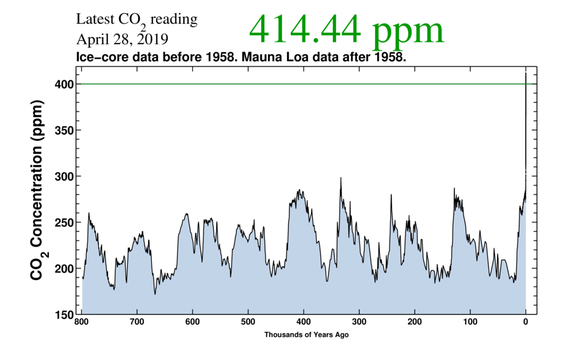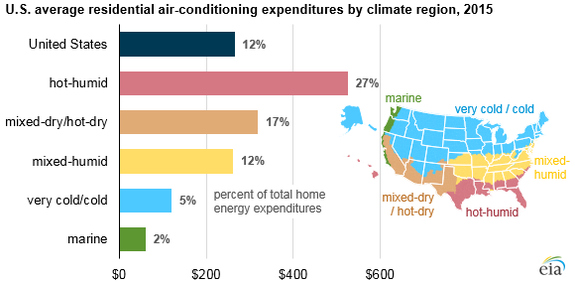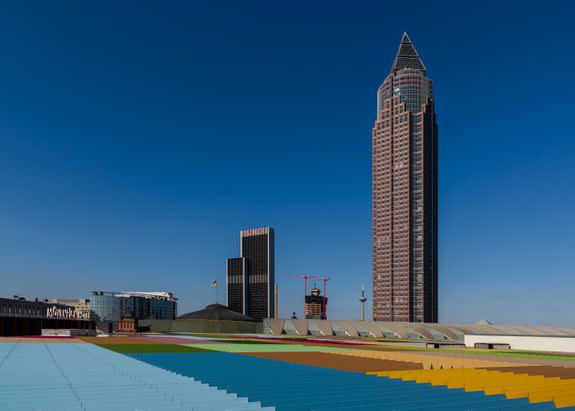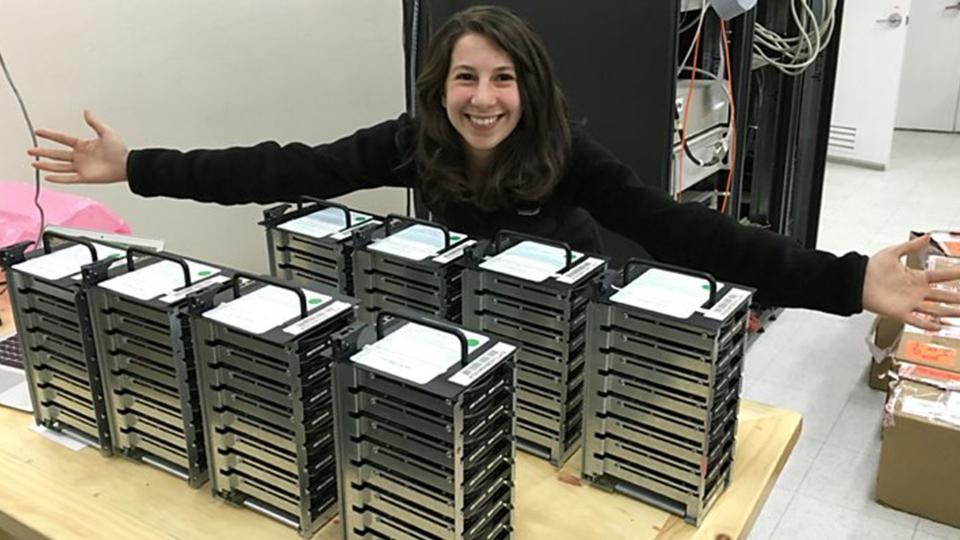Your future air conditioner might do way more than just cool your house

About 1.6 billion AC units hum on the planet today. By 2050, that number will likely swell to over 5 billion.
Roland Dittmeyer, an engineer at Germany's Karlsruhe Institute of Technology, sees a lot of potential here. AC units, especially in big residential or commercial buildings, suck in masses of air, sometimes all day long. In a paper published Tuesday in the journal Nature Communications, Dittmeyer and a team of researchers propose that AC units be employed for a dual purpose: gulping the potent heat-trapping gas carbon dioxide out of the air while also cooling homes and offices.
It's a relevant innovation to consider. Modern civilization has a giant CO2 problem. Carbon dioxide levels are the highest they've been in millions of years. And, critically, the rate of CO2 increase in the last 50 years isn't just unprecedented in human history — it's unprecedented in the geologic record. If global society intends to avoid the worst consequences of climate change, slashing CO2 emissions means attacking the problem on a number of fronts: transportation, power, industry, and even sucking carbon out of the air.
"The bottom line is if we really want to achieve net-zero CO2 emissions, we have to address all sectors of the energy system," said Dittmeyer.

Image: scripps institution of oceanography
As things currently stand, global society's odds of curbing Earth's warming at just modest temperature increases looks dismal, at best.
AC units, if either modified or newly built, are well-positioned to absorb carbon from the CO2 saturated skies. The cooling units are already in heavy use and sucking in air.
SEE ALSO: This scientist keeps winning money from people who bet against climate change
"It's a huge amount of air that is contacted anyways," said Dittmeyer. "You’re already paying for the electricity."
"That’s an important argument," he added.
How the AC plan would work
Dittmeyer isn't just putting an idea on a paper. He intends to modify the AC system at the large laboratory where he works, the Karlsruhe Institute of Technology's Institute for Micro Process Engineering, to prove it can be done. "It’s the ventilation system that we have in our institute," he said. "You can use it as a showcase to the public."
The concept relies on lots of air rushing through AC systems, where a filter can capture and amass carbon dioxide. Then, with an ample supply of carbon, Dittmeyer proposes using the AC system to add water and employ an energy-efficient chemical process to make an artificial liquid, fossil fuel. In a purely idealistic reality, this captured carbon might be forever buried in the ground, but he proposes that the high-quality fuel instead be saved — and in some cases used — rather than extracting more CO2-rich fossil fuels from the ground. After all, in the coming decades it's unlikely that the slow, grinding wheels of government will be able to snap its fingers and completely eliminate the need for fossil fuels (or hydrocarbons) from every sector of society, all over the world.

Image: U.S. Energy Information Administration
"If you have enough [AC-derived fuel], you could store it," Dittmeyer explained. "You could build up a future hydrocarbon reserve. Maybe later use it, or not use it."
Imagine AC units in skyscrapers all over Manhattan funneling the captured carbon into a basement, wherein an automated conversion plant would convert the carbon bounty into a storable liquid. Perhaps little of it will ever need to be used, depending on how quickly society electrifies its transportation needs. On Monday, Los Angeles Mayor Eric Garcetti announced "L.A.'s Green New Deal," an ambitious plan envisioning that 80 percent of cars would emit no carbon by the mid-2030s. Even in that type of optimistic scenario, the second largest city in the U.S. will still need fuel, perhaps derived from AC units.
"You can transport it with trucks," said Dittmeyer. "It's a bit like a mini-refinery."

Image: Shutterstock / Uwe Aranas
Dittmeyer and his team found that skyscrapers and other large buildings could remove bounties of CO2. Germany's 63-story Frankfurt Fair Tower might gulp up 1.5 tons of carbon dioxide every hour. Home AC units are far less powerful, but they would make a dent, too. A six-apartment building might take up over a pound of CO2 each hour.
If Dittmeyer proves the technology at his large-scale lab, perhaps governments and lawmakers who hope to slash carbon emissions would adopt or subsidize the carbon-gulping technology. It's a means of slashing carbon emissions without waiting for slow-moving industries to enact all the ambitious changes needed to curb the planet's truly skyrocketing carbon emissions.
"You can observe that industry watches, but is not really doing anything," said Dittmeyer. "We have something that can be applied in the place that you live, or in the place that you work."
WATCH: Meet Katie Bouman, one of the scientists who helped capture the first black hole image


